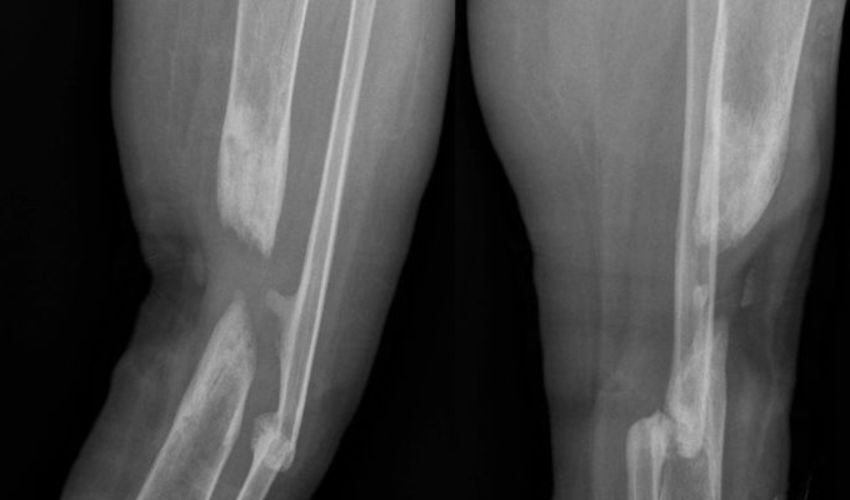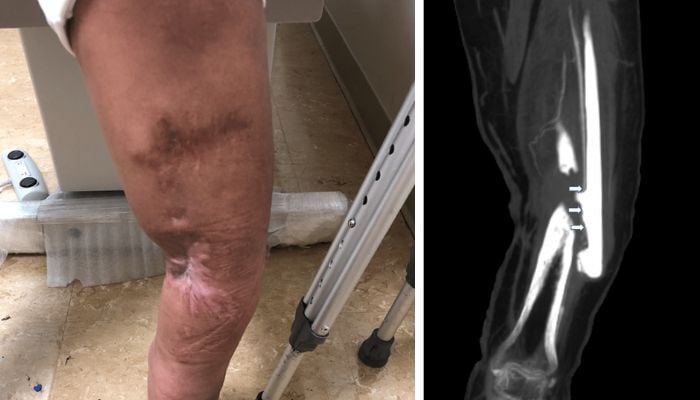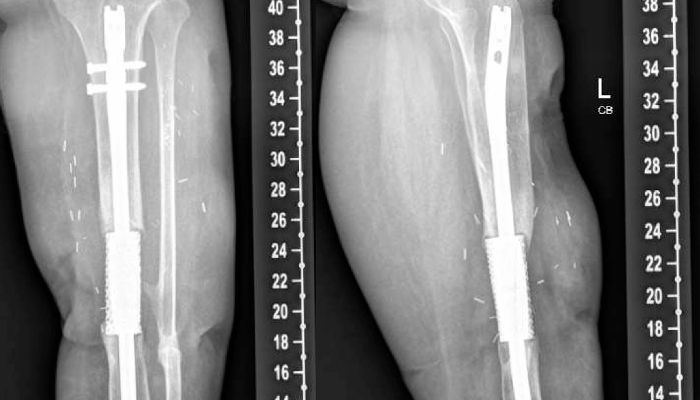Custom 3D Printed Cage Successfully Treats Infected Tibial Shaft

A recent case report published in Cureus journal highlighted the use of a novel 3D-printed titanium mesh cage to treat an infected tibial shaft ‘non-union’, a medical term for fractures that takes an extended period of time to heal. The report detailed the successful treatment of a 25-year-old female patient who had been suffering from a non-union fracture for over a year. Traditionally, non-union fractures are treated with the removal of infected tissues and bone grafts, which can have varying degrees of success. However, a 3D-printed titanium mesh cage was used in her case, providing a more customized and effective solution for the patient’s fracture.
CT imaging of the patient’s leg was used to render 3D images, ensuring that the cage, which was designed and manufactured in collaboration with Restor3D Inc, fit the exact dimensions of the patient’s tibial shaft. During surgery, the implant was placed into the bone defect. Then, an intramedullary nail was inserted, passing through the 3D-printed titanium mesh cage, and locked in place with screws. The cage had multiple perforations to allow for better blood flow and promote bone growth, while the titanium material was chosen for its strength and biocompatibility.

Pre-op X-ray scan of patients Tibial Shaft fracture in her right leg (photo credits: Cureus Journal)
The results of the procedure were impressive, with the patient experiencing a significant reduction in pain and inflammation, as well as improved mobility. Follow-up scans showed evidence of bone regeneration and complete fusion of the non-union site. The titanium mesh allowed for better visualization during the healing process, allowing for closer monitoring of the patient’s progress. The patient could even bear weight on the affected leg and return to daily activities a year after the surgery.
The Potential of 3D Printed Implants
The use of patient-specific 3D-printed titanium implants offers a level of flexibility and customization that is especially useful in complex cases where the subject has severe lower-limb bone defects. While this technique is not yet mainstream and should be used with caution, the case report demonstrates the potential of 3D printing technology in the field of medicine. By using CAD software to design custom-made implants, doctors can create implants that are perfectly suited to the patient’s anatomy. This can improve the success rate of surgeries and reduce the risk of complications.

Scan of patients leg one year post- treatment, with 3D Printed titanium mesh cage, intramedullary nail, and screws
Furthermore, 3D printing technology allows for the production of complex parts that would be impossible to manufacture using traditional techniques. This means that implants can be designed with features that promote bone growth and healing, as was the case with the biocompatible coating on the titanium mesh cage used in this surgery. In any case, you can find out more about the role of the 3D printed implant in the treatment HERE.
What do you think about 3D printed implants in orthopaedic surgery? Let us know in a comment below or on our LinkedIn, Facebook, and Twitter pages! Don’t forget to sign up for our free weekly Newsletter here, the latest 3D printing news straight to your inbox! You can also find all our videos on our YouTube channel.
*Cover Photo Credits: Cureus Journal






